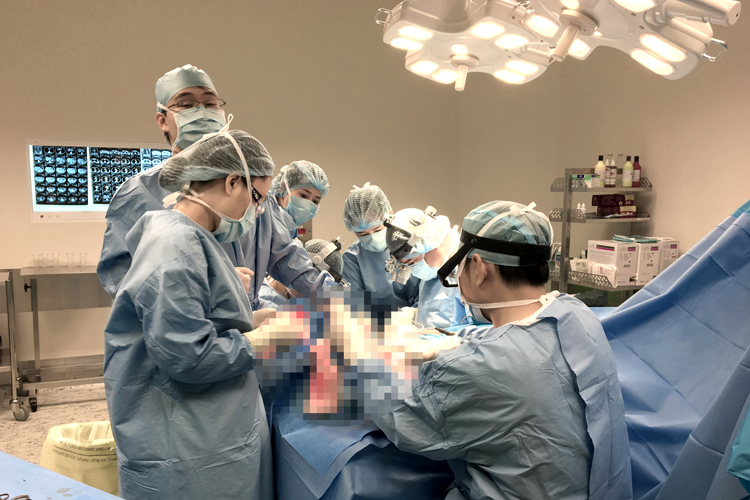When treating cancer cases, the necessary complex microsurgical techniques tend to require prolonged hours in the operating room, and surgeons need be highly experienced and dedicated to their work.

Dr Nguyen Quang Dai, Head of Otolaryngology, is one such doctor. He recently successfully performed a microsurgical treatment for a patient diagnosed with stage IV larynx cancer which had expanded to the base of his tongue and a lymph node.
The patient was a 50 year-old man from Bac Lieu Province. The surgery was performed by Dr Dai and his surgical team on 4th April 2017. After 10 intense hours, the team, led by Dr Dai, succeeded in removing his larynx and the base of the tongue (including the tumour), as well as the metastasised nodes on both sides using an ultrasound scalpel. The patient’s tongue was reconstructed with a radial forearm graft via vascular microsurgery. Fortunately, the marginal lymph nodes were identified as non-cancerous by anatomists, but Dr Dai said it as a difficult case. Because the tumour was so large, measuring 10 cm in diameter, it made the removal process very complex to perform.
“Prior to every major surgery, I always study all investigation results and scan results carefully that I can clearly visualise the exact location of the tumour. Not only do we formulate detailed surgical procedures, my surgical team and I also have to prepare backup plans to be ready for any situation that arises during the operation.
“Entering the operating theatre, my career and honour – and I feel even my own life — depends on every cut because I understand it is my patient’s life that I’m holding in my hands,” shares Dr Dai.
During his post-surgery recovery, the patient had to practice swallowing under the instruction of an experienced physiotherapist. Moving forwards, the patient would practice vocal communication with support of an electrolarynx. “As a doctor, my responsibilities are not only bound to saving a patient’s life, but also to enhancing their living standards. This explains why an electrolarynx is needed for a patient undergoing larynx surgery,” he adds.



